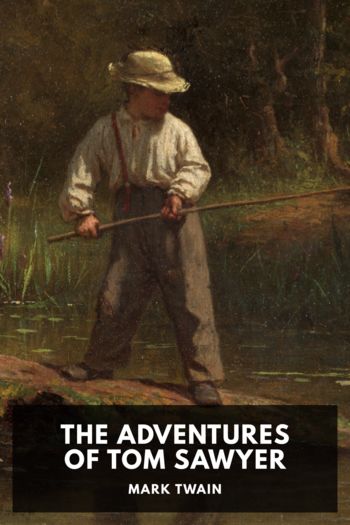The Autobiography of Mark Twain by Mark Twain (good book recommendations .TXT) 📕

Description
The Autobiography of Mark Twain is a collection of reminiscences and reflections. Twain began dictating them in 1870, and in 1906 he published Chapters from My Autobiography in twenty-five installments in the North American Review. He continued to write stories for his autobiography, most of which weren’t published in his lifetime due to a lack of access to his papers, or their private subject matters. After Twain’s death, numerous editors have tried to organize this collection of published and unpublished autobiographical works, producing various differing editions. The most recent attempt is by the Mark Twain Project at the University of California, Berkeley, which published a three-volume edition; but, through what many consider legal trickery, the University of California, Berkeley has claimed copyright on that edition until 2047—137 years after Twain’s death.
This Standard Ebooks production is based on Harper and Brothers’ 1924 collection, compiled by Albert Bigelow Paine.
Read free book «The Autobiography of Mark Twain by Mark Twain (good book recommendations .TXT) 📕» - read online or download for free at americanlibrarybooks.com
- Author: Mark Twain
Read book online «The Autobiography of Mark Twain by Mark Twain (good book recommendations .TXT) 📕». Author - Mark Twain
When Governor Nye’s four-year term was drawing to a close, the mystery of why he had ever consented to leave the great State of New York and help inhabit that sagebrush desert was solved. He had gone out there in order to become a United States Senator. All that was now necessary was to turn the Territory into a State. He did it without any difficulty. That patch of sand and that sparse population were not well fitted for the heavy burden of a State government, but no matter, the people were willing to have the change, and so the Governor’s game was made.
Orion’s game was made, too, apparently, for he was as popular because of his honesty as the Governor was for more substantial reasons. But at the critical moment the inborn capriciousness of his character rose up without warning, and disaster followed.
Wednesday, April 4, 1906The Morris case again—Scope of this autobiography, a mirror—More about Nast sale; laurels for Mr. Clemens—Clippings in regard to Woman’s University Club reception; Mr. Clemens comments on them—Vassar benefit at Hudson Theater; Mr. Clemens meets many old friends.
Mrs. Morris Case in Senate.
Nomination of Barnes Opens Way for an Inquiry.
(Special to The New York Times.)
Washington, April 3.—Criticism of the appointment of Mr. Roosevelt’s Assistant Secretary, B. F. Barnes, to be Postmaster of Washington continues. It now seems likely that the appointment may have a hard time in passing the Senate. Barnes’s action in having Mrs. Minor Morris put out of the White House is the chief ground of opposition. The Senate Committee on Post Offices and Post Roads has determined to investigate Barnes’s action in the Morris case, and eye witnesses of the affair have been summoned to appear before the committee tomorrow and tell what they saw. This is the same investigation which Mr. Tillman requested and which the Senate refused to grant. It now comes as the result of the President’s action in appointing Barnes Postmaster. The witnesses who are to appear before the committee were not asked to testify in the investigation which the President made when he decided that Barnes’s course was justified.
There was much speculation today as to who Mr. Barnes’s successor as Assistant Secretary would be. The Evening Star tonight devotes a column and a half to suggestions on the subject, saying that the leading candidates are John L. McGrew, a clerk in the White House offices; Warren Young, Chief Executive Clerk; M. C. Latta, the President’s personal stenographer; James J. Corbett of New York, Robert Fitzsimmons, Augustus Ruhlin, and James J. Jeffries.
The article is illustrated with two pictures of Corbett and Fitzsimmons.
That is neat, and causes me much gentle delight. The point of that whole matter lies in the last four names that are mentioned in it. These four men are prizefighters—the most celebrated ones now living.
Is the incident now closed? Again we cannot tell. The smell of it may linger in American history a thousand years yet.
This autobiography of mine differs from other autobiographies—differs from all other autobiographies, except Benvenuto’s, perhaps. The conventional biography of all the ages is an open window. The autobiographer sits there and examines and discusses the people that go by—not all of them, but the notorious ones, the famous ones; those that wear fine uniforms, and crowns when it is not raining; and very great poets and great statesmen—illustrious people with whom he has had the high privilege of coming in contact. He likes to toss a wave of recognition to these with his hand as they go by, and he likes to notice that the others are seeing him do this, and admiring. He likes to let on that in discussing these occasional people that wear the good clothes he is only interested in interesting his reader and is in a measure unconscious of himself.
But this autobiography of mine is not that kind of an autobiography. This autobiography of mine is a mirror, and I am looking at myself in it all the time. Incidentally I notice the people that pass along at my back—I get glimpses of them in the mirror—and whenever they say or do anything that can help advertise me and flatter me and raise me in my own estimation, I set these things down in my autobiography. I rejoice when a king or a duke comes





Comments (0)